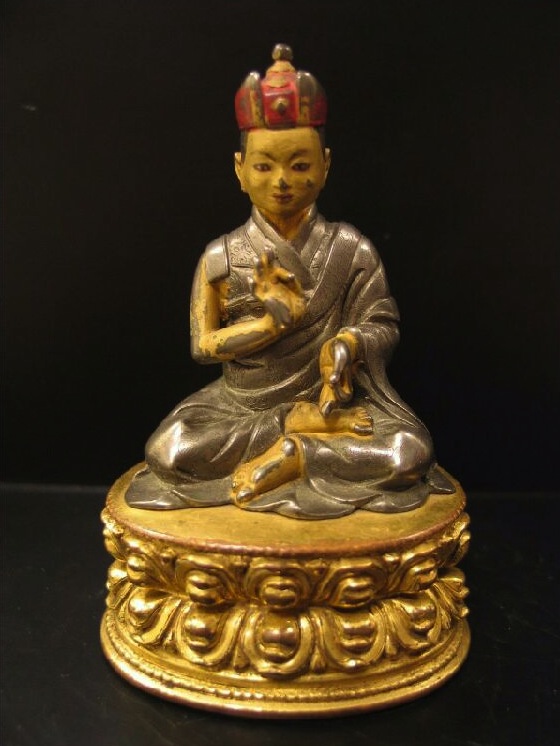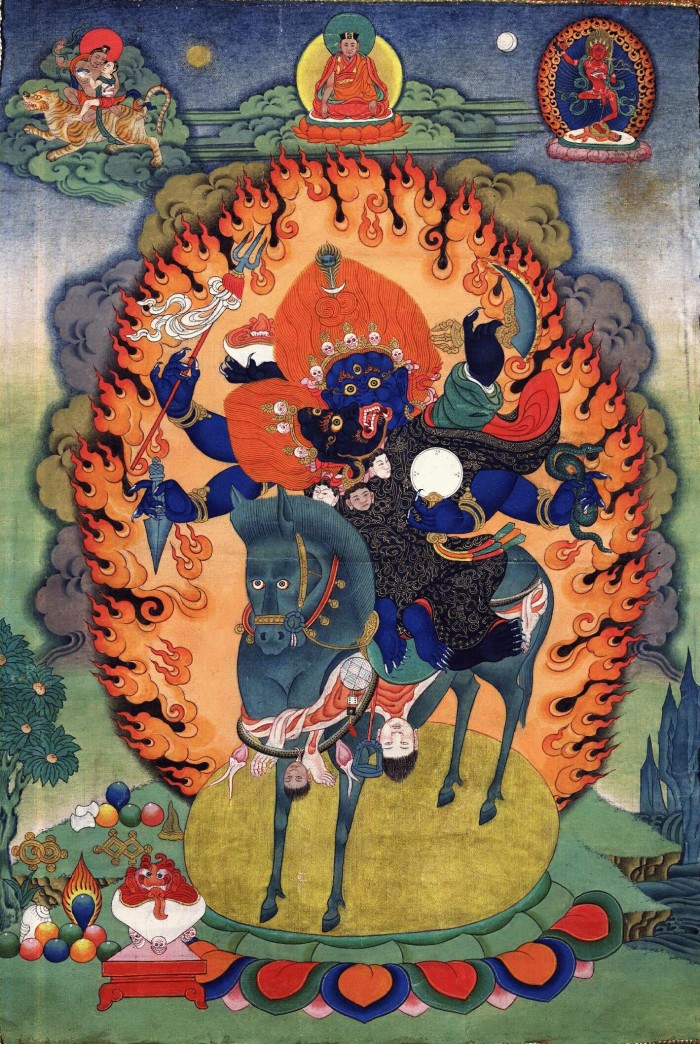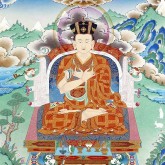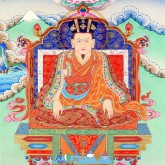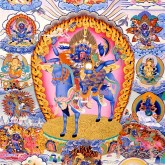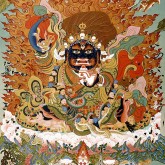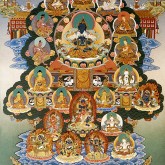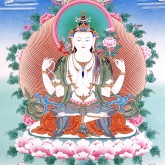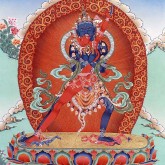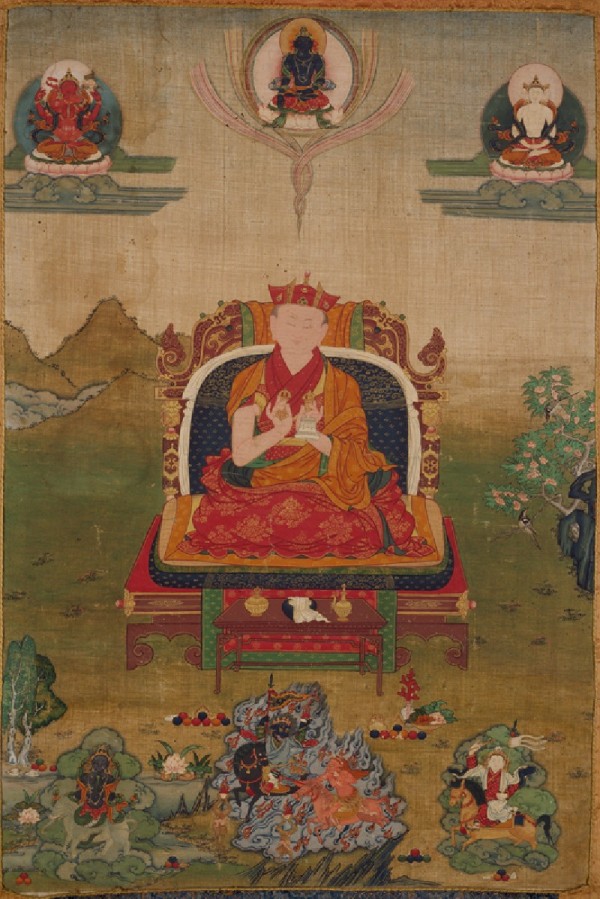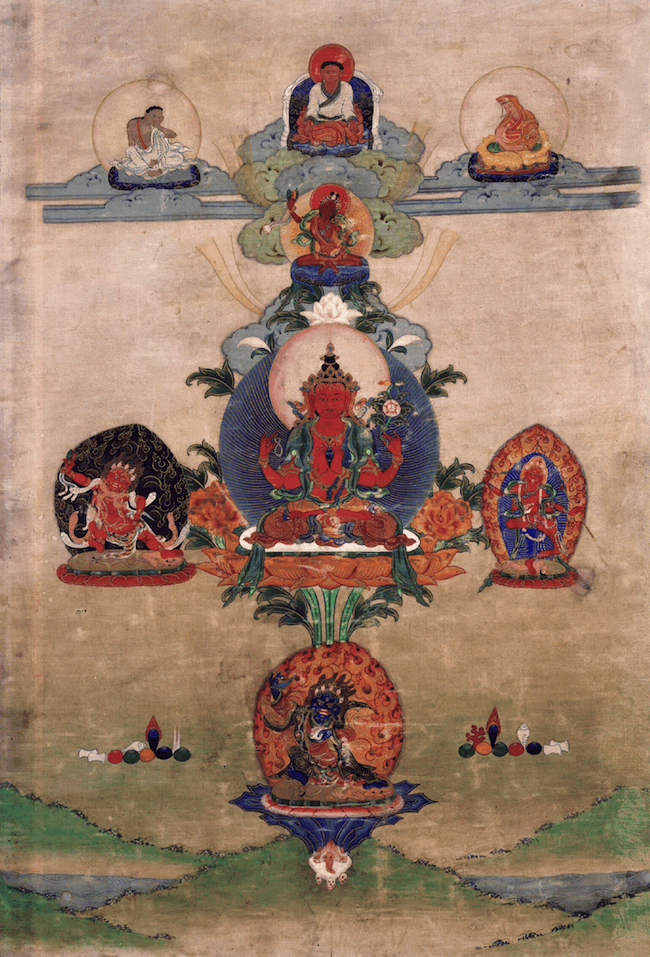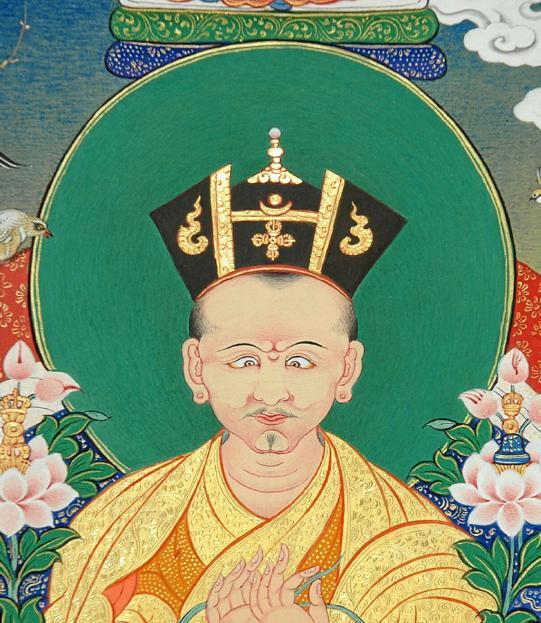This incredible video shows the holiest site in Kathmandu, Nepal – the Swayambhu Stupa – from a completely new angle. Enjoy!
All ‘Buddhist Iconography’ posts
Swayambhu Stupa from a new angle
Friday, May 9th, 2014Tags: Swayambhu
Posted in Buddhist Iconography, Video | 2 Comments »
Karma Gardri Sculpture Style
Thursday, December 19th, 2013The Himalayan Art Resource website recently added a page for Karma Gardri sculpture style. One can find beautiful examples of sculptures of previous incarnations of the Karmapa and Shamarpa. Some examples can be seen below (click to enlarge).
Tags: Himalayan Art, Karma Gardri
Posted in Buddhist Iconography | No Comments »
Lama Jampa Thaye speaks about Buddhist Art at Statue Exhibition in Kennington
Thursday, June 14th, 2012At the exhibition of Buddhist art in Kennington entitled “Space for Mind, Space for Art: treasures of Tibetan Buddhism, and contemporary responses“, on 29 May 2012, there was a great programme of events and talks about Buddhist art.
We were honoured to have as keynote speaker at the private view Lama Jampa Thaye, a scholar and meditation master trained in the Sakya and Karma Kagyu traditions of Buddhism, who found time in his busy schedule to visit the exhibition and give this wonderful welcoming speech:
The event, a display of some of the finest Buddhist statues ever exhibited in London, was hosted by Diamond Way Buddhism UK. As part of the exhibition, several striking pieces of contemporary art were shown next to the Tibetan Buddhist statues and thangkas. The exhibition was held at The Spring, on Vauxhall Walk in the Kennington area of SE11.
A full report of the event along with photographs will follow soon!
Tags: Buddhism Kennington, Buddhist Art Kennington, Buddhist statues, Lama Jampa Thaye, London, Statue Exhibition
Posted in Buddhist Iconography, Diamond Way Buddhism, Kennington Events, Video | No Comments »
Radiant Goddess and Black Coat
Tuesday, August 23rd, 2011This 19th Century thangka from Eastern Tibet is in the collection of the Rubin Museum of Art. Today’s update to the Himalayan Art Resource website states:
Tags: Black Coat, Dorje Bernagchen, Palden Lhamo, Radiant Goddess
Posted in Buddhist Iconography | No Comments »
Karma Kagyu Meditation Forms
Saturday, July 23rd, 2011The pictures below show some of the most common forms used in the meditation practices of the Karma Kagyu tradition of Buddhism. They are from the website www.thanka.buddhizmusma.hu.
Click on any of the thumbnails to enlarge the image.
Top row, left to right: 16th Karmapa, 2nd Karmapa, Black Coat in union with Radiant Goddess. Middle row left to right: Black Coat, the Karma Kagyu Refuge Tree, Diamond Mind. Bottom row left to right: Loving Eyes, Red Wisdom, Buddha of Highest Bliss in union with Red Wisdom.
Tags: Kagyu Lineage, Meditation, Thangkas
Posted in Buddhist Iconography, Buddhist Meditation | No Comments »
Painting of the 10th Shamarpa Mipham Chodrup Gyamtso
Sunday, June 19th, 2011This beautiful thangka painting of the 10th Shamarpa Mipham Chodrup Gyamtso (1742-1792), in the Karma Gardri style of Eastern Tibet, was painted in the middle of the 18th Century, and is currently on display at the Ashmolean Museum in Oxford.
Tags: Karma Gardri, Karma Kagyu history, Oxford
Posted in Buddhist Iconography, Shamar Rinpoche | No Comments »
Painting of Gyalwa Gyamtso “Almighty Ocean”
Thursday, May 12th, 2011This exceptional 19th Century thangka, from the collection of the Rubin Museum of Art in New York, was painted in Eastern Tibet according to the Karma Gardri tradition. It depicts the single form of “Almighty Ocean”, in Tibetan “Gyalwa Gyamtso” or in Sanskrit “Jinasagara”. Almighty Ocean is a red form of Loving Eyes (Tib. Chenresig, Skt. Avalokiteshvara), the buddha of compassion.
Tags: Karma Gardri
Posted in Buddhist Iconography | No Comments »
10th Karmapa Choying Dorje – painting by Pema Rinzin
Tuesday, March 15th, 2011This impressive thangka painting of the 10th Karmapa, Choying Dorje was recently uploaded to the New York Tibetan Art Studio blog. It was painted by world-renowned master Tibetan thangka painter and contemporary artist Pema Rinzin. Rinzin’s depth of knowledge and personal mastery of Himalayan art – with its rarely practiced preparation and application of traditional stone ground pigments – is widely recognized by institutions and individual scholars as rare and exceptional.
Tags: 10th Karmapa, Pema Rinzin
Posted in Buddhist Iconography | No Comments »
 Follow
Follow